New Jersey man restores, paints, and sells typewriters: Lacey Mechanic Revives Vintage Typewriters From His Home. Buy one at Iron Fox typewriters.
Featured image: Custom 1963 Smith Corona Sterling. Source: Iron Fox Typewriters
You begin to interest me…vaguely
New Jersey man restores, paints, and sells typewriters: Lacey Mechanic Revives Vintage Typewriters From His Home. Buy one at Iron Fox typewriters.
Featured image: Custom 1963 Smith Corona Sterling. Source: Iron Fox Typewriters
Author Robert Caro’s personal archives will go to the New York Historical Society. Caro is still writing the final volume of his Lyndon B. Johnson biography.


Fabricius is a Google Arts & Culture project to use AI to translate Egyptian hieroglyphics.
Use it to translate your emoji-filled text messages to hieroglyphics with the Fabricius Text to Hieroglyphics Converter, or if you have some ancient hieroglyphics you seriously want translate, use the workbench (only works on desktops and Middle Egyptian).
The journey began with The Hieroglyphics Initiative, a Ubisoft research project that was launched at the British Museum in September 2017 to coincide with the release of Assassin’s Creed Origins. Working with Google and development agency Psycle Interactive, the project sought to identify whether machine learning could transform the process of collating, cataloguing and understanding the written language of the Pharaohs.
Fabricius: About. https://artsexperiments.withgoogle.com/fabricius/en/about
Some kind of horse-birth-watching-with-wine neighborhood party resulted in famed author Susan Orlean drunk-tweeting to widespread acclaim this Friday night. Orlean most recently published that article about the rabbit virus in the New Yorker.
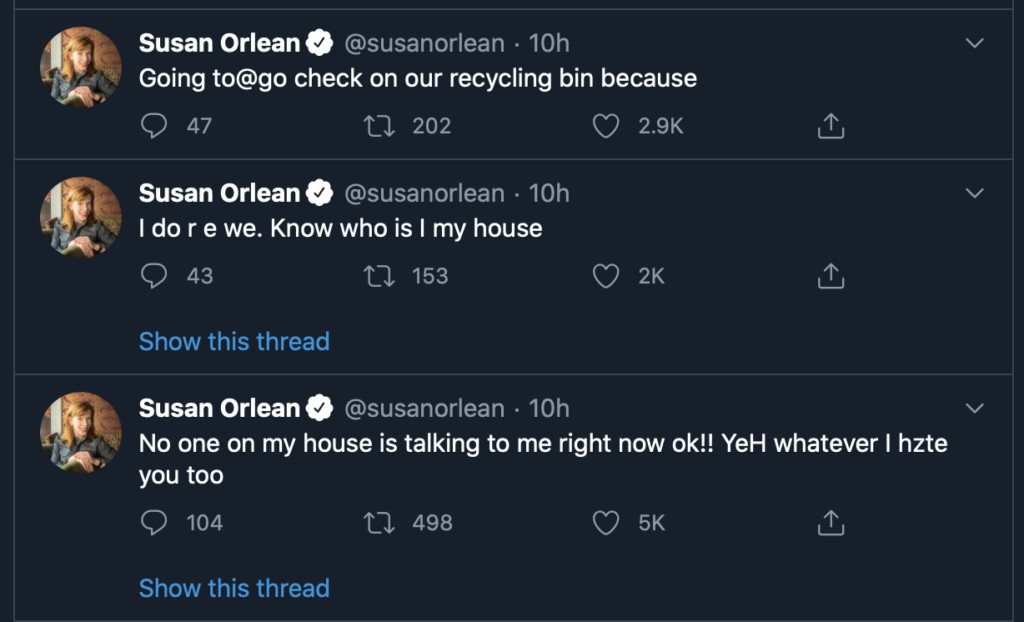
Her tweet-storm confirms her firmly held belief that “anything was a great story as long as I cared about it deeply and wanted just as deeply to tell that story to someone else. And that impulse has never let me down.”
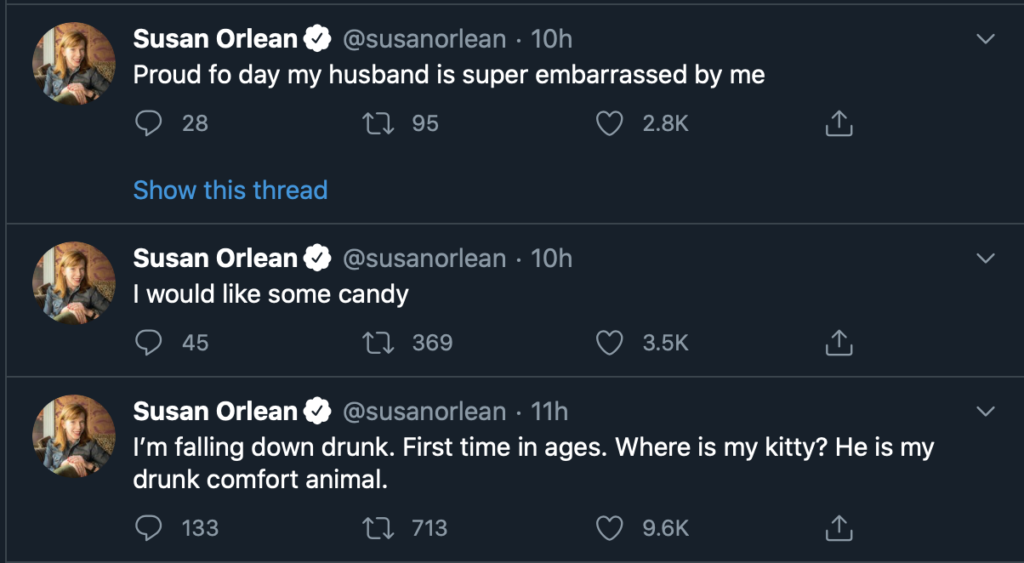
For the actual news reports:
Susan Orlean’s drunk tweets are the song of the summer
Susan Orlean’s Hilarious, Drunken Pandemic Tweet Storm Is a Delight
Publisher Springer has temporarily made hundreds of textbooks available to download for free during the coronavirus pandemic. For archaeologists, there’s Diane Gifford-Gonzalez’s ~600 page zooarchaeology book. A sample of other free books is below, and you can find all the rest at Springer. Thanks to @jriveraprince for pointing this out on Twitter.
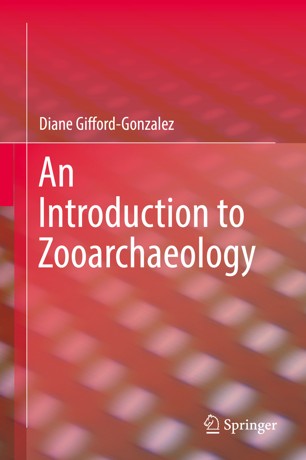
An Introduction to Zooarchaeology
An Anthology of London in Literature, 1558-1914
ArcGIS for Environmental and Water Issues
Writing for Publication: Transitions and Tools that Support Scholars’ Success
Social Media Management: Technologies and Strategies for Creating Business Value
Of Cigarettes, High Heels, and Other Interesting Things: An Introduction to Semiotics

One person’s experience in and advice on combining classics, anthropology, and human osteology in a career: The Skeleton in My Closet by Kristina Killgrove. There’s some weird-sounding situations, like the quote below, that make me wonder what else was going on, but the advice is pretty solid.
While there was interest among the students in a Roman archaeology offering, my archaeology division head didn’t allow it: a regular semester course would take away from the “real archaeology classes,” and that would be unfair to other faculty’s enrollment, I was told
The place where Samuel Clemens, a.k.a. Mark Twain, did much of his writing is an octagonal stand-alone study that his sister-in-law built for him in Elmira, New York. Many of his most famous works, including The Adventures of Huckleberry Finn, were written here. The study was later moved to the campus of Elmira College, where it can be seen today.
I enter my Iowa City hotel room and open the curtains to check out the view and there’s a flash of green in front of my eyes. It’s an actual, I-kid-you-not hummingbird flying outside my window.
This is not your typical chain hotel just off the highway. This is the Coralville Marriott Hotel, not far from downtown Iowa City, and even closer to the Interstate 80 exit ramp.
With the help of brownfields remediation grants (thank you, Environmental Protection Agency), the town of Coralville has cleaned up and redeveloped several acres of former wasteland. The Marriott Hotel is part of that redevelopment, and outside my window, I can see another component: the Iowa River Landing Wetlands Park. This charming park covers about 12 acres and includes ponds, an elevated walking trail, and wetlands plants.
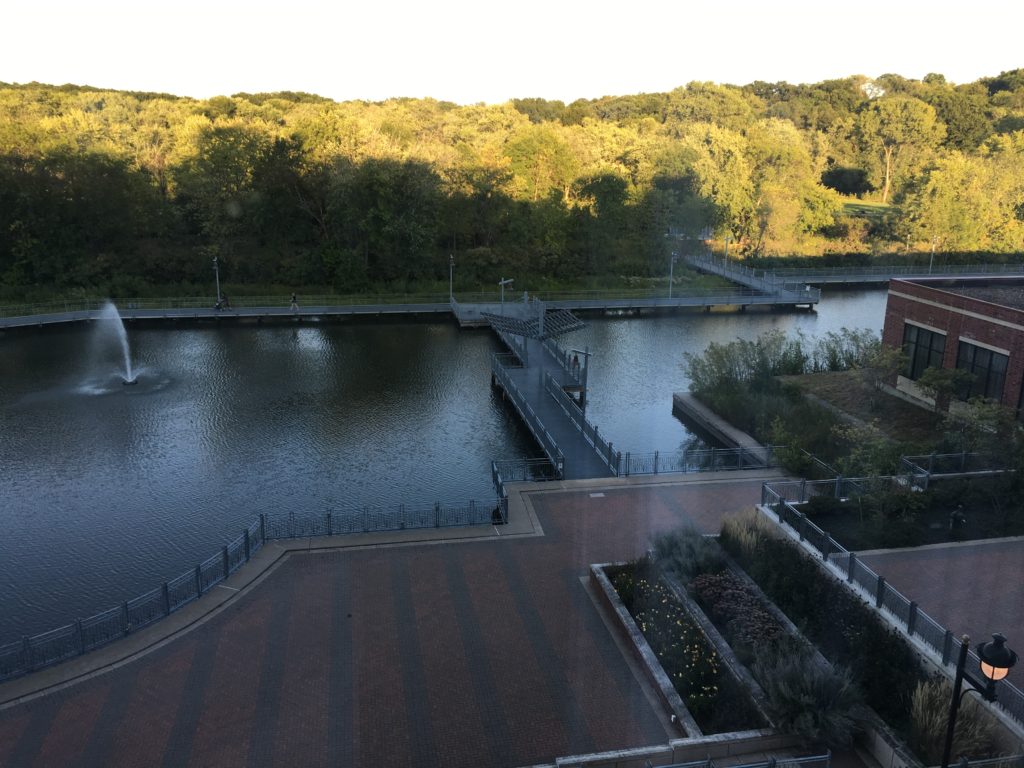
From the lobby, you walk right out the back door to a large plaza, past a raised bed garden where vegetables are grown for the hotel restaurant, and onto the nature trail. Follow the path through the park (or just walk out the front door of the hotel) and it brings you back to the rest of the redevelopment project: several restaurants, an antique car museum, and a historical society.
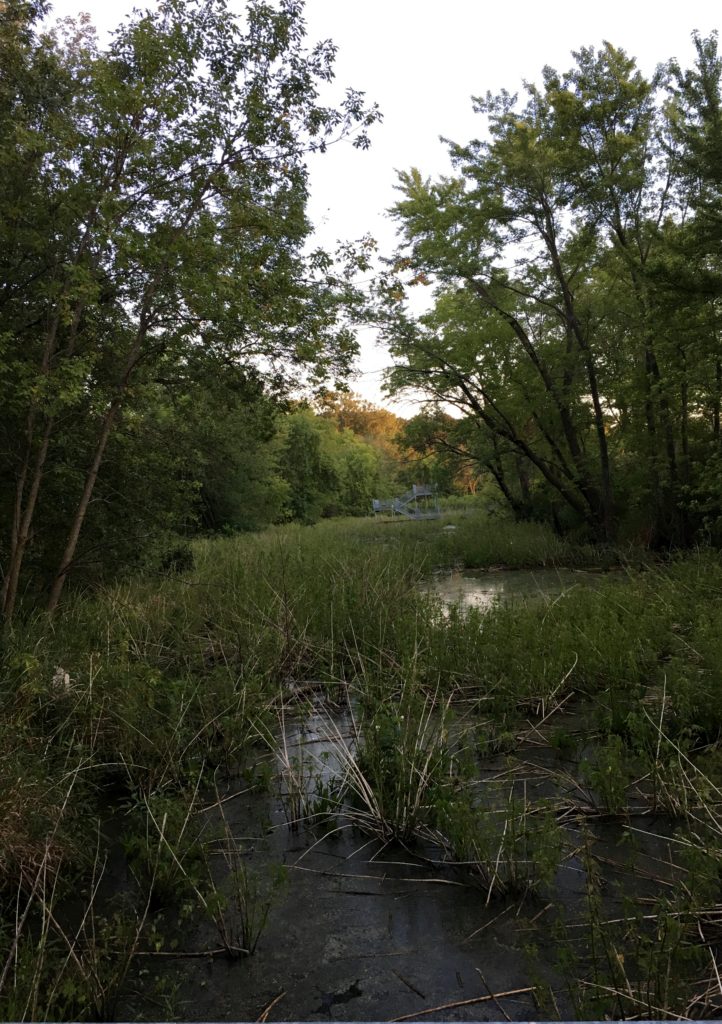
There’s one more little gem inside the Marriott. Iowa City is the home of the famed Iowa Writers’ Workshop at the University of Iowa. Off the hotel lobby is the Iowa Writers Library, a bright room lined with bookshelves full of books by faculty and graduates of the Writers’ Workshop. There’s a fireplace, some comfortable chairs, and even a rolling ladder you can use to reach the books on the top shelves.
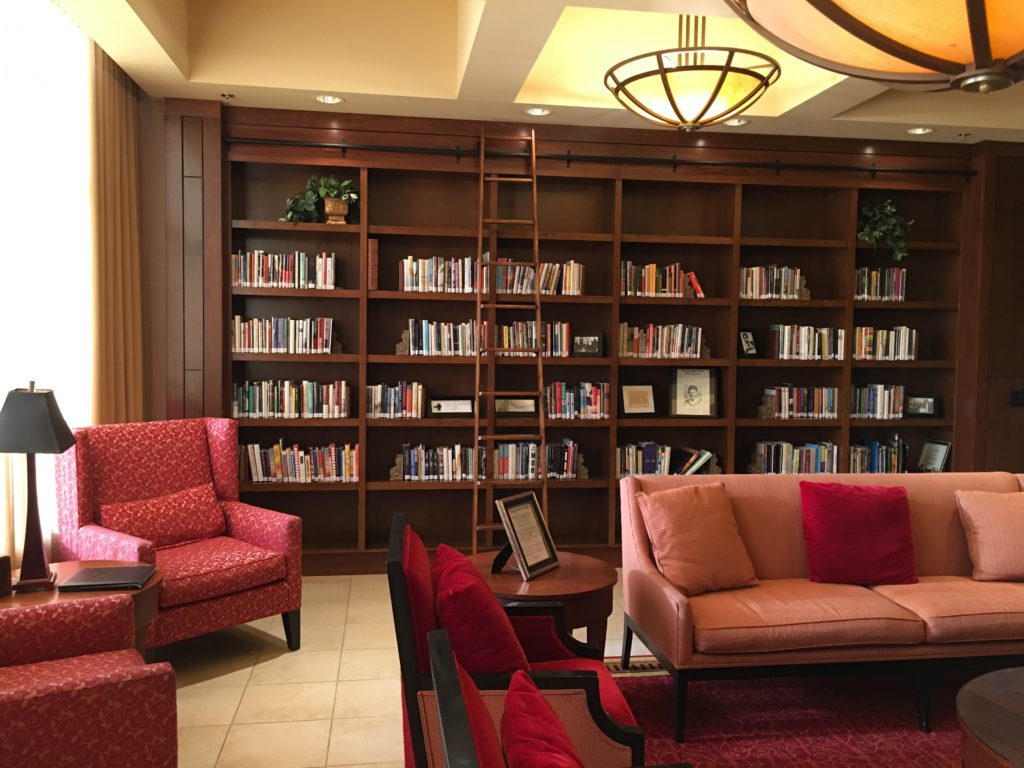
Wondering why it’s called Coralville? About 380 million years ago, during the Devonian Period, Iowa City and the surrounding area were under the sea. Extensive coral reefs formed in the water, and then became fossilized. Remnants of these reefs can be found throughout the area.
Mark Raymond Harrington was not only an archaeologist and ethnologist, but also a writer. Tellers of Weird Tales has an account of one of his earlier works of fiction, Teoquitla the Golden, which was published in Weird Tales using his pseudonym, Ramon de las Cuevas (i.e., Raymond of the Caves).
This story was published in 1924, the year before Arthur Parker and William Ritchie would begin excavations at the Lamoka Lake site. Harrington had recently completed his work at the Ozark rockshelters (likely the inspiration for his pen name) and would soon make some of his major discoveries in Nevada.
See how Harrington dressed when he wasn’t writing here.

Following a trail from Open Access Archaeology led to this practical guide to extracting data from documents, whether paper or digital. Whether you want to get the numbers from one table in an article cleanly into Excel, or you just got the Wikileaks download, you can find the tools in Jonathan Stray’s guide.